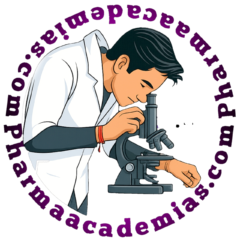Transport across the Cell Membrane: The process of transporting substances across the cell membrane is pivotal in governing the movement of various molecules into and out of cells. The plasma membrane, also known as the cell membrane, plays a key role in this essential function. It serves as a selective and permeable barrier that actively regulates the flow of ions and molecules. To accomplish this, two primary mechanisms drive this process: passive transport and active transport.
Transport across the Cell Membrane
1. Passive transport
Passive transport is a natural and energy-free process that relies on the inherent kinetic energy of particles. Unlike active transport, it doesn’t demand cellular energy expenditure. This mechanism propels substances along their concentration gradient, from high to low concentration areas. Passive transport encompasses three primary processes:

- Simple Diffusion: Small, non-polar molecules like oxygen, carbon dioxide, and lipids can easily cross the cell membrane’s lipid bilayer. The speed of diffusion depends on factors such as the steepness of the concentration gradient, temperature, and the size of the molecules.
- Facilitated Diffusion: For larger or polar molecules unable to cross the lipid bilayer, transport proteins come into play. Channel proteins create specific channels for molecule passage, while carrier proteins bind to molecules, changing shape to transport them across the membrane.
- Osmosis: Osmosis is the passive movement of water molecules through a selectively permeable membrane, typically facilitated by specialized water channels called aquaporins. This process involves water flowing from areas of lower solute concentration (higher water concentration) to regions of higher solute concentration (lower water concentration).
2. Active Transport

In contrast to passive transport, active transport is an energy-demanding process, primarily fueled by ATP, that operates against the natural flow of molecules or ions. This active transport process actively propels substances from areas of lower concentration to regions of higher concentration. This energy-intensive mechanism is vital for establishing and maintaining crucial concentration gradients essential for various cellular functions. It encompasses two primary mechanisms:
Primary Active Transport: In primary active transport, the cell directly invests energy, usually in the form of ATP, to push molecules or ions across the membrane, defying their concentration gradient. A well-known example of this mechanism is the sodium-potassium pump (Na+/K+ pump). This pump actively expels sodium ions out of the cell while importing potassium ions into the cell. This action contributes to preserving the membrane potential and osmotic balance within the cell.
Secondary Active Transport (Cotransport): Secondary active transport leverages the stored energy from an electrochemical gradient established by primary active transport. It comprises two common types: symport and antiport systems. In symport, molecules are transported in the same direction as the gradient created by primary active transport. For instance, glucose and sodium cotransport in intestinal cells move molecules together in the same direction. Conversely, in antiport, molecules are transported in the opposite direction. An example is the sodium-calcium exchange in cardiac muscle cells, where sodium moves in as calcium moves out.
3. Bulk Transport
Active transport is an essential process in cell biology, allowing cells to maintain precise internal conditions and execute specific functions, such as nerve signal transmission and nutrient uptake. It’s a remarkable example of how cells invest energy to orchestrate intricate processes and sustain life. Bulk transport mechanisms come into play when large molecules or particles need to traverse the cell membrane. There are two primary categories:

1. Endocytosis: Endocytosis involves the internalization of materials within the cell by encapsulating them in vesicles formed from the cell membrane. Variants of endocytosis include phagocytosis (engulfing solid particles), pinocytosis (absorbing liquids), and receptor-mediated endocytosis (specific molecule uptake).
2. Exocytosis: In contrast to endocytosis, exocytosis allows cells to expel substances by packaging them into vesicles that fuse with the cell membrane, releasing their contents outside the cell. This process is essential for producing hormones, neurotransmitters, and other cellular products.
Transport across the cell membrane is a tightly regulated process, and it plays a pivotal role in maintaining cell homeostasis, facilitating nutrient uptake, ensuring efficient waste removal, and supporting effective cell communication. The choice of specific transport mechanisms employed by cells depends on the properties of the molecules involved and the energy requirements of the transport process.

